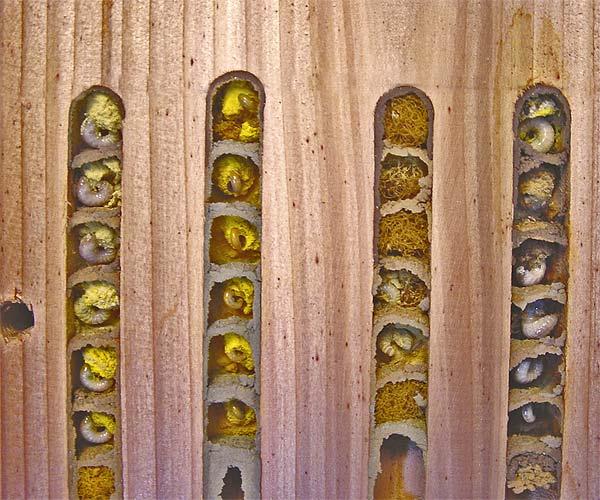Bee double-header this week! You may be overwhelmed by the bee landscape ecology papers, and honestly so am I. But this is an attempt to keep up with the literature, so here it goes. Two papers this week. The first one I will cover is in Proceedings of the Royal Society of London B, lead by Annika Hass a PhD student at the University of Göttingen in Germany, and examines how field edges and crop diversity affect bee communities and pollination in Western Europe. The second paper is in Science, lead by Rachael Winfree, a professor at Rutgers University, examines the number of bee species necessary for successful crop pollination in the field.
In the Proc R Soc B paper, Hass and her colleagues examined the pollinator communities in 229 fields in 4 European countries. To examine the pollination services of those pollinators they planted rows of radish, Raphanus sativus, along the edges of the fields and measured seed set. It's a little counter-intuitive to think about radish pollination, as we mostly eat the roots of radishes rather than the fruits. But people do sometimes eat the radish seed pods, and sometimes use the seeds for oil (and they are definitely used for making more radishes). For each field they mapped the field-border density (they call this configurational heterogeneity), as well as the diversity of crops in the field. Hass and her colleagues found that field-border densities were positively correlated with wild bee abundance, and wild bee abundance was positively correlated with radish seed production on the field edges. Interestingly, crop diversity was actually negatively correlated with wild bee abundance. The authors propose that this is because increased crop diversity in their European fields meant more highly managed crops (with associated pesticide applications). It would be interesting to see if these results are the same when you increase diversity without highly managed crops. It's a little hard for me to envision what higher field border densities (configurational heterogeneity) would look like, and I wish that they had included aerial photographs of fields with high and low field border densities. But generally it seems that interrupting monocultures with natural field borders enhances numbers of bees, and that makes intuitive sense.
In the Science paper, Winfree and her colleagues measured pollination of watermelon, cranberry, and blueberry, by wild bees on 16 farms in New Jersey and Pennsylvania. They collected bees visiting flowers in each of these crops. In addition they bagged fresh flowers until they opened, and then removed the bags. They recorded the first bee species to visit the flower and then recorded the number of pollen grains deposited by that bee, giving them data on the pollination services of different bee species (I think this is very cool!). They found that in order for the crops to receive target levels of 50% pollination at one site alone might take less than 20 bee species, but to achieve that level of pollination over 15 different sites (spread over thousands of kilometers and thereby varying in many different factors) would require to ecosystem to maintain more like 50 different bee species, and 75% pollination would require 80 different species. When people think of crop pollination they mostly think of honeybees, and this study is so important because it highlights that to effectively pollinate our crops we cannot rely on honeybees but rather need a large diversity of bees.
One that note, the honeybee is a managed livestock species introduced from Europe and is not a good solution for loss of our native bees, and in fact is part of the problem (see recent NPR story on this). I love honey as much as I suspect you do, and we currently are dependent on managed honeybees for many of our crops (because of the way we plant them in huge monocultures - but that's for another time, and see the Proc R Soc B paper above). But we need to be clear when we are talking bee conservation we are not talking about honeybees, honeybees have management problems, but that is a livestock management challenge, not a conservation issue. I have made the analogy that focusing on honeybees when we talk about bee conservation is as if a bird conservation discussion was focused on chickens. There is a lot of research needed on honeybee issues (plus they have very cool biology), and they are an important part of our food chain and economy, but these are not conservation issues.

































